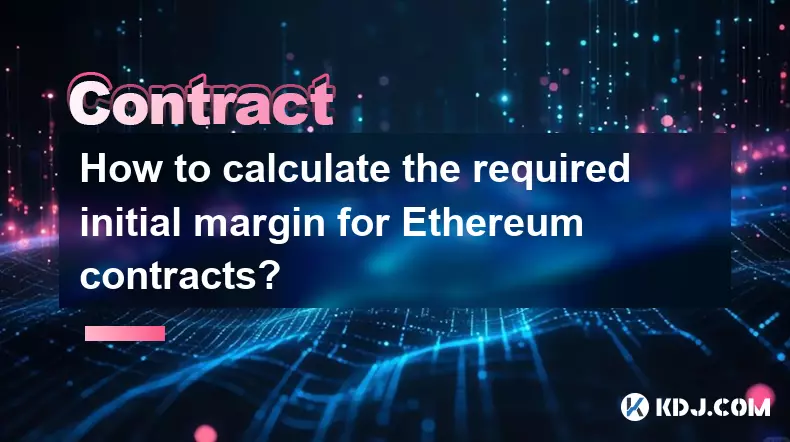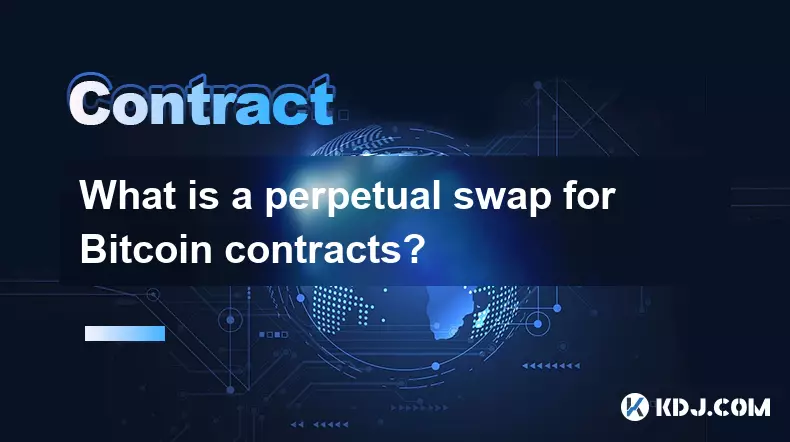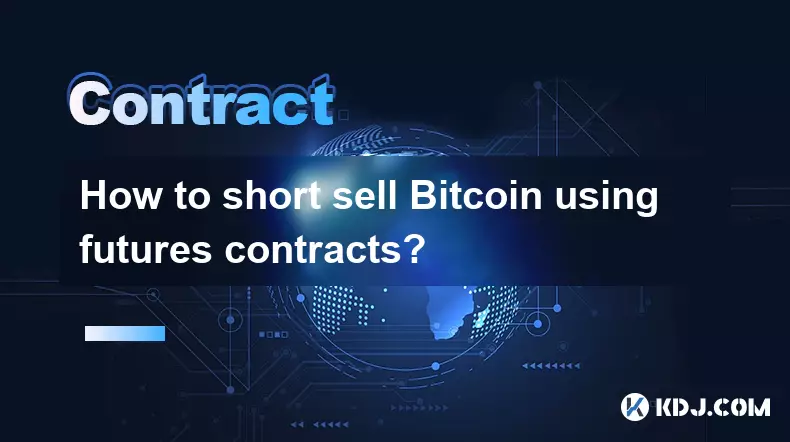-
 bitcoin
bitcoin $114320.977035 USD
-0.40% -
 ethereum
ethereum $4152.439985 USD
-1.75% -
 tether
tether $1.000111 USD
-0.04% -
 xrp
xrp $2.843037 USD
-1.63% -
 bnb
bnb $1013.349380 USD
-1.62% -
 solana
solana $208.362767 USD
-2.10% -
 usd-coin
usd-coin $0.999783 USD
0.00% -
 dogecoin
dogecoin $0.232559 USD
-1.00% -
 tron
tron $0.333491 USD
-1.09% -
 cardano
cardano $0.806310 USD
0.19% -
 hyperliquid
hyperliquid $45.023720 USD
-1.59% -
 ethena-usde
ethena-usde $1.000819 USD
-0.06% -
 chainlink
chainlink $21.241249 USD
-2.11% -
 avalanche
avalanche $30.035416 USD
-0.66% -
 stellar
stellar $0.364984 USD
-2.05%
How do I modify the leverage of an existing Ethereum contract position?
On Ethereum-based derivatives platforms like dYdX and GMX, leverage is typically fixed at entry, requiring users to close and reopen positions to adjust exposure, which incurs fees and increases slippage risk.
Oct 01, 2025 at 08:54 am

Understanding Leverage in Ethereum-Based Derivatives
1. Leverage in the context of Ethereum-based trading typically applies to decentralized derivatives platforms or centralized exchanges offering ETH perpetual contracts. These positions are not governed by traditional smart contracts users deploy, but rather through protocol-specific margin systems. The ability to modify leverage depends entirely on the platform hosting the position.
2. On platforms like dYdX, GMX, or ApeX, leverage is set at the time of opening a position. Once established, most protocols do not allow dynamic adjustment of leverage for an open contract. This design choice enhances system stability and prevents manipulation of margin ratios mid-trade.
3. Some advanced platforms offer partial features resembling leverage modification. For example, users can increase their collateral to effectively reduce exposure, which mimics lowering leverage. However, this does not alter the initial leverage multiplier recorded on-chain.
4. True leverage modification—changing the borrowing ratio against the principal—is rare due to risk management constraints. Protocols calculate liquidation prices based on initial leverage. Altering it mid-position could destabilize oracle pricing and incentive layers.
5. Users must review the documentation of the specific DeFi protocol or exchange they are operating on. Each platform implements leverage rules differently, and assumptions from one ecosystem may not apply elsewhere.
How to Adjust Exposure on Major Ethereum Platforms
1. On dYdX (v3/v4), leverage is fixed upon entry. To change effective leverage, traders must close part of their position manually and reopen at a new ratio. This process requires two separate transactions and incurs fees each time.
2. GMX allows users to add or remove collateral after opening a trade. While this changes the health factor and risk profile, the underlying leverage value remains unchanged. Increasing collateral improves liquidation resistance without altering the debt-to-margin ratio.
3. ApeX Protocol currently does not support direct leverage edits. Traders seeking higher or lower exposure must settle the current contract and initiate a new one with updated parameters.
4. Kwenta, built on Synthetix, enables users to adjust positions through its console interface. Though leverage isn’t directly editable, closing a portion of a synthetic long or short and re-entering achieves similar outcomes.
5. When using perps markets on Arbitrum or Optimism, gas efficiency becomes critical. Frequent position closures and reopens to simulate leverage changes should be timed carefully to minimize network costs.
Risks Associated with Position Management
1. Attempting to manipulate leverage indirectly increases transaction count, exposing traders to slippage and front-running risks, especially during high volatility periods involving ETH price swings.
2. Impermanent loss is not applicable in perps trading, but funding rate accrual continues with every open minute. Closing and reopening introduces gaps where funding calculations reset, potentially leading to unexpected cost spikes.
3. Oracle delays can affect entry and exit prices when recreating positions. Fast-moving markets may result in worse fill rates than anticipated, particularly on chains with higher block times.
4. Wallet security practices must remain stringent. Every new trade requires signature confirmation. Phishing attacks often target frequent traders by mimicking interface prompts for repeated approvals.
5. Smart contract vulnerabilities in lesser-known platforms may expose funds during rapid position adjustments. Audited, battle-tested protocols reduce this risk significantly.
Frequently Asked Questions
Can I change leverage on Uniswap?Uniswap does not offer leveraged trading natively. It is a spot exchange for swapping tokens. Leveraged positions require integration with third-party lending protocols or specialized derivatives DEXs.
Is there a way to automate leverage adjustments?Certain bots and DeFi automation tools like Gelato Network can monitor health factors and trigger position closures when thresholds are met. However, fully automated leverage updates within a single contract are not supported by existing standards.
Why don't protocols allow real-time leverage editing?Dynamic leverage changes would complicate risk modeling, impact insurance pool solvency, and introduce attack vectors such as manipulating liquidation cascades. Fixed terms ensure predictability across the system.
Does changing networks affect leverage options?Yes. Ethereum mainnet, Arbitrum, Optimism, and Base host different versions of derivatives platforms. Feature availability, including leverage caps and position management tools, varies per chain due to liquidity depth and protocol deployment choices.
Disclaimer:info@kdj.com
The information provided is not trading advice. kdj.com does not assume any responsibility for any investments made based on the information provided in this article. Cryptocurrencies are highly volatile and it is highly recommended that you invest with caution after thorough research!
If you believe that the content used on this website infringes your copyright, please contact us immediately (info@kdj.com) and we will delete it promptly.
- BlockDAG, DOGE, HYPE Sponsorship: Crypto Trends Shaping 2025
- 2025-10-01 00:25:13
- Deutsche Börse and Circle: A StableCoin Adoption Powerhouse in Europe
- 2025-10-01 00:25:13
- BlockDAG's Presale Buzz: Is It the Crypto to Watch in October 2025?
- 2025-10-01 00:30:13
- Bitcoin, Crypto, and IQ: When Genius Meets Digital Gold?
- 2025-10-01 00:30:13
- Stablecoins, American Innovation, and Wallet Tokens: The Next Frontier
- 2025-10-01 00:35:12
- NBU, Coins, and Crypto in Ukraine: A New Yorker's Take
- 2025-10-01 00:45:14
Related knowledge

What is the maintenance margin for Bitcoin contracts?
Oct 02,2025 at 01:36am
Decentralized Exchanges Gain Momentum in 20241. Decentralized exchanges (DEXs) have seen a significant rise in trading volume, surpassing centralized ...

How to calculate the required initial margin for Ethereum contracts?
Oct 01,2025 at 06:01am
Understanding Initial Margin in Ethereum Futures1. The initial margin for Ethereum futures contracts represents the minimum amount of capital a trader...

What is a perpetual swap for Bitcoin contracts?
Oct 01,2025 at 08:18am
Understanding Perpetual Swaps in Bitcoin Trading1. A perpetual swap is a type of derivative contract that allows traders to speculate on the price of ...

What is the best platform for trading SOL contracts?
Oct 01,2025 at 06:36am
Understanding the Role of Decentralized Exchanges in Modern Crypto Trading1. Decentralized exchanges (DEXs) have reshaped how traders interact with di...

How to short sell Bitcoin using futures contracts?
Oct 01,2025 at 02:54am
Understanding the Role of Decentralized Exchanges in Crypto Trading1. Decentralized exchanges (DEXs) have become a cornerstone of the cryptocurrency e...

Are PEPE contracts a good way to trade volatility?
Oct 01,2025 at 04:18am
Understanding PEPE Contracts in the Cryptocurrency Market1. PEPE contracts, derived from the broader meme coin movement, have gained attention due to ...

What is the maintenance margin for Bitcoin contracts?
Oct 02,2025 at 01:36am
Decentralized Exchanges Gain Momentum in 20241. Decentralized exchanges (DEXs) have seen a significant rise in trading volume, surpassing centralized ...

How to calculate the required initial margin for Ethereum contracts?
Oct 01,2025 at 06:01am
Understanding Initial Margin in Ethereum Futures1. The initial margin for Ethereum futures contracts represents the minimum amount of capital a trader...

What is a perpetual swap for Bitcoin contracts?
Oct 01,2025 at 08:18am
Understanding Perpetual Swaps in Bitcoin Trading1. A perpetual swap is a type of derivative contract that allows traders to speculate on the price of ...

What is the best platform for trading SOL contracts?
Oct 01,2025 at 06:36am
Understanding the Role of Decentralized Exchanges in Modern Crypto Trading1. Decentralized exchanges (DEXs) have reshaped how traders interact with di...

How to short sell Bitcoin using futures contracts?
Oct 01,2025 at 02:54am
Understanding the Role of Decentralized Exchanges in Crypto Trading1. Decentralized exchanges (DEXs) have become a cornerstone of the cryptocurrency e...

Are PEPE contracts a good way to trade volatility?
Oct 01,2025 at 04:18am
Understanding PEPE Contracts in the Cryptocurrency Market1. PEPE contracts, derived from the broader meme coin movement, have gained attention due to ...
See all articles










































































